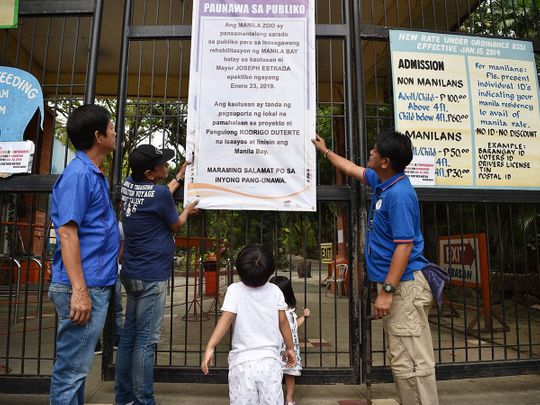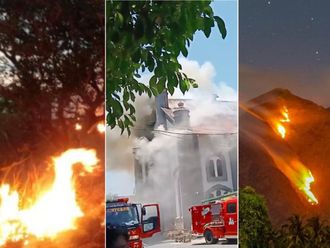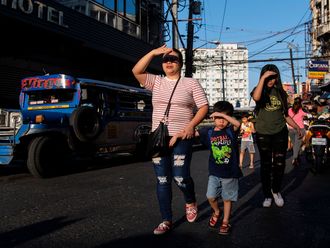
Manila: The capital’s zoo is the latest target in the government crackdown on pollution-causing establishments in the Manila Bay.
Mayor Joseph Estrada has ordered the indefinite closure of the Manila Zoo after Environment Secretary Roy Cimatu said the city zoo counts among the top polluters in the Manila Bay alongside factories, informal settlers living in the area, hotels and other similar establishments.
A report by the Philippine Daily Inquirer said Estrada ordered the Manila Zoo closed “indefinitely” in a memorandum issued last January 21, 2019.
Estrada, the former president, mandated that “full support and cooperation be extended to the national government for the rehabilitation of Manila Bay”.
The report also quoted City Administrator Jojo Alcovendaz as saying two water-treatment plants will be installed to treat the water draining from the city zoo to the Manila Bay.
The Manila Zoo is located just about 400 metres away from the bay’s shoreline.
Last December, President Rodrigo Duterte ordered the rehabilitation of the Manila Bay, a massive effort that would take at least seven years and a total P47 billion (Dhs 3.28 billion).
Duterte said the efforts to revive the bay will be similar to that undertaken in Boracay Island in Central Philippines.
The Boracay rehabilitation had necessitated the six months closure of the island resulting in the loss of billions of pesos in tourism revenues to businesses as well as the government.
Duterte said he would not mind if government suffers billions in losses if it would mean the environmental degradation would be stopped.
Massive undertaking
“What is important to the president is that we will clean up this Manila Bay. It speaks well of his political will to carry out this massive undertaking,” president’s spokesman Salvador Panelo said.
“Establishments have to put up their own sewage treatment plants (STPs). They cannot discharge their wastewater in the esteros [waterways],” Cimatu said. “We are giving them three months,” he added.
While the bay takes its name from the city, its environmental impact stretches up to Cavite south of the capital up to Bulacan and Bataan in the north.
Cimatu said rehabilitation project requires a coordinated and integrated effort to clean up all water bodies draining into the bay and deal with the sources of pollution.
“All of these efforts for the clean-up are integrated. We plan to clean the Manila Bay including all the esteros and rivers connected — the Pasig River and the Laguna Lake,” Cimatu said.
Cimatu said the regional offices of the Department of Environment and Natural Resources (DENR) in Metro Manila and the Calabarzon region, as well as its provincial offices in Pampanga and Bataan, will be involved in the rehabilitation efforts.











